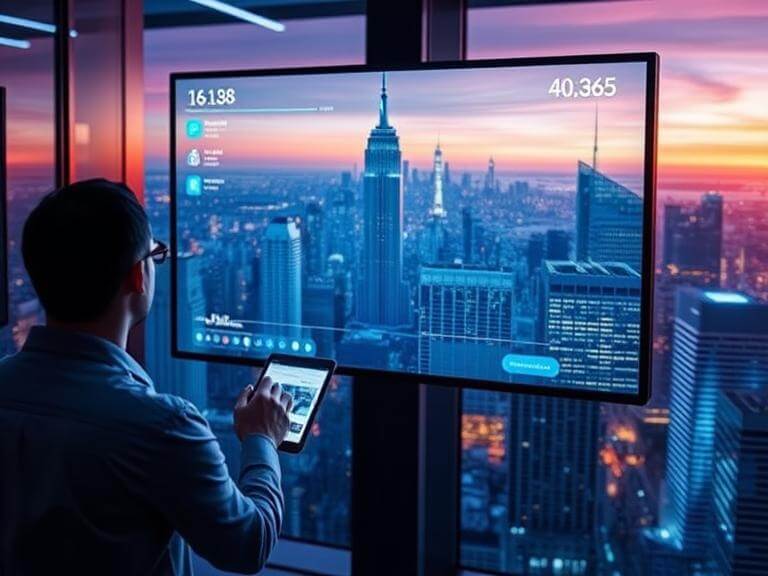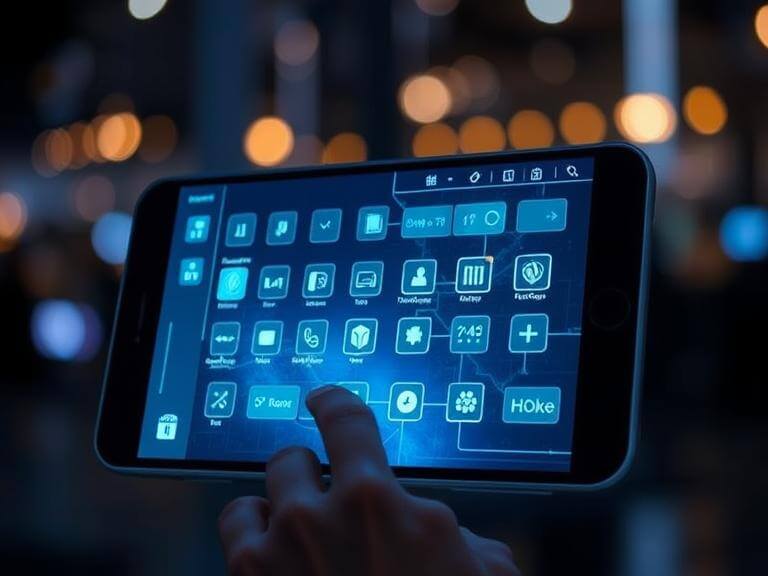Introduction
In recent years, technology has continued to evolve at a rapid pace, and new innovations are constantly reshaping how we interact with devices and applications.
One such innovation is the Tip Screen, an emerging technology that is quickly gaining popularity for its ability to improve user experiences across various devices and platforms.
This article will explore what a Tip Screen is, how it works, and why it is revolutionizing the way we use touchscreens. Whether it’s in smartphones, tablets, or other interactive devices, the Tip Screen is making waves in the tech world and promises to change how we engage with technology in the near future.
What is a Tip Screen?
A Tip Screen is an advanced touchscreen technology that enhances the way users interact with their devices. Unlike traditional touchscreens, which respond to pressure from the user’s finger or stylus, a Tip Screen can detect subtle gestures and movements, offering a more intuitive and responsive experience.
This technology is often integrated with the latest innovations in haptic feedback, providing users with both tactile and visual feedback as they interact with the screen.
The main feature of a Tip Screen is its ability to track the user’s fingertip position with great accuracy, enabling more precise interactions. This can include simple tasks such as swiping or tapping, but it can also support more complex actions like drawing or controlling virtual elements on the screen with extreme precision.
How Does Tip Screen Technology Work?
The Tip Screen operates by utilizing sensors and advanced algorithms to detect the movement and pressure applied to the screen. This allows it to capture very fine details of the user’s interaction, even down to the tip of their finger. In essence, a Tip Screen can “feel” the movements of your fingertips and provide real-time responses, creating a more seamless and interactive experience.
This technology is typically built on a combination of capacitive touch sensing, infrared sensing, and sometimes optical technology. Capacitive sensors are the most common in modern devices, using the electrical properties of the human body to detect touch. The Tip Screen takes this technology a step further by improving the sensitivity and accuracy, allowing for more detailed tracking of finger movements and pressure.
In addition, Tip Screen technology often includes features like:
- Haptic Feedback: A response system that vibrates or creates tactile sensations when interacting with the screen, enhancing the feeling of physical interaction.
- Pressure Sensitivity: The screen can detect varying levels of pressure, allowing users to perform different actions depending on how hard they press.
- Gesture Recognition: Advanced Tip Screen systems can identify specific hand gestures or movements, enabling a more natural and intuitive user interface.
Key Benefits of Tip Screen Technology

The introduction of Tip Screen technology brings several advantages that enhance the overall user experience. Here are some of the key benefits:
1. Enhanced Precision
One of the most significant advantages of the Tip Screen is its ability to offer enhanced precision. Whether you are drawing, writing, or performing any task that requires accuracy, the Tip Screen provides a much finer level of control than traditional touchscreens. This is particularly useful in applications like digital art, design, and gaming, where precision is critical.
2. Improved Responsiveness
With Tip Screen technology, users experience faster and more responsive interactions. The improved sensitivity of the screen allows for quicker and more accurate feedback, making everyday tasks like typing, scrolling, or navigating more fluid and efficient. The responsiveness of the Tip Screen enhances user satisfaction and engagement, making it a desirable feature for a wide range of devices.
3. Natural User Interaction
The Tip Screen supports more natural user interactions. Traditional touchscreens typically require direct contact with the surface, which can feel somewhat unnatural at times. The Tip Screen allows for more natural gestures, such as hovering or gentle swiping, and even enables multitouch gestures with ease. These capabilities make the Tip Screen ideal for creating a more immersive and intuitive user experience.
4. Expanded Functionality
Thanks to its advanced sensing capabilities, the Tip Screen can be used in a variety of new and exciting ways. For example, it can support multi-finger gestures, precise drawing, and pressure-sensitive applications. These features open up possibilities for new kinds of applications, particularly in fields such as design, gaming, and virtual reality. As developers learn more about how to harness the capabilities of Tip Screen technology, we can expect even more innovative uses.
5. Energy Efficiency
Despite its advanced capabilities, Tip Screen technology can also be more energy-efficient than traditional touchscreens. By using advanced sensors and optimizing their power consumption, Tip Screen devices can deliver an enhanced user experience without significantly draining the device’s battery. This is especially important in mobile devices, where battery life is a top concern for users.
Applications of Tip Screen Technology
The potential applications of Tip Screen technology are vast, and the technology is already starting to be integrated into several consumer products. Here are some of the key areas where Tip Screen technology is making a difference:
1. Smartphones and Tablets
The most common application of Tip Screen technology is in smartphones and tablets. With Tip Screen devices, users can enjoy more precise touch interactions, enhanced multitouch capabilities, and a smoother overall experience. Whether it’s navigating the interface, typing, or playing games, the Tip Screen improves the responsiveness and accuracy of these devices, making them more enjoyable to use.
2. Gaming
Gaming is another area where Tip Screen technology is making an impact. The increased precision and responsiveness of Tip Screens enhance gaming experiences, particularly for games that require fine motor skills or multi-finger gestures. Whether it’s controlling characters in a game or drawing intricate paths on the screen, Tip Screen technology offers gamers a more immersive and accurate experience.
3. Virtual Reality (VR) and Augmented Reality (AR)
In VR and AR applications, Tip Screen technology can be used to create more realistic and responsive virtual environments. By improving the precision of interactions with virtual objects, Tip Screens can make virtual worlds feel more natural and interactive. This is a significant advantage in applications such as VR gaming, design, and training simulations.
4. Digital Art and Design
For digital artists and designers, Tip Screen technology offers an incredible level of precision. Pressure-sensitive touch and advanced gesture recognition allow artists to create detailed artwork with ease. Whether it’s sketching on a tablet or editing photos on a touchscreen device, the Tip Screen offers a more fluid and responsive experience, allowing for more creative possibilities.
The Future of Tip Screen Technology
The future of Tip Screen technology is bright, and we are only scratching the surface of its potential. As the technology continues to improve, we can expect even more innovative applications in various industries. Here are some potential advancements:
- Smarter Gesture Recognition: As Tip Screen technology evolves, we may see more sophisticated gesture recognition systems, allowing users to control devices with just their hands or fingers in mid-air.
- Flexible Screens: The integration of Tip Screen technology with flexible screens could lead to new form factors for devices, such as foldable phones and bendable tablets, where users can enjoy a touchscreen experience on a device that bends or stretches.
- Wider Adoption in Consumer Devices: As the technology becomes more refined, we may see Tip Screen technology integrated into a broader range of consumer devices, from laptops to smart home devices, further enhancing the user experience across various platforms.
Conclusion
Tip Screen technology is rapidly emerging as a game-changer in the world of user interfaces. By offering enhanced precision, responsiveness, and natural interactions, it has the potential to revolutionize the way we use touchscreens in smartphones, tablets, gaming devices, and beyond.
As the technology continues to evolve, we can expect even more exciting applications that will improve user experiences across various industries.
Whether it’s digital art, gaming, or everyday mobile use, the Tip Screen is shaping up to be a key player in the future of technology. As more companies adopt this technology and develop innovative ways to integrate it, the user experience will only continue to improve, making our interactions with devices more intuitive, engaging, and efficient.
